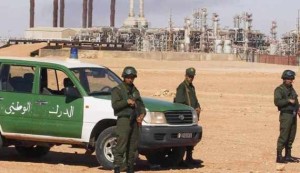On October 11th, the Nobel Prize Committee announced its decision to award the 2019 Peace Prize to Ethiopia’s charismatic Prime Minister, Abiy Ahmed Ali for his efforts to “resolve the border conflict with neighboring Eritrea.” After 30 years of insurgency and 21 years of war, Ethiopia may finally have peace with its breakaway neighbor, a conflict that cost tens of thousands of lives. With the Nobel Prize announcement, the young and energetic former Army Lieutenant Colonel joined 99 of history’s most treasured peacemakers. Eleven days later, he promised he would mobilize millions of soldiers to fight Egypt if that country sought to prevent completion of the Great Ethiopian Renaissance Dam.
The spectacle of a Nobel Laureate threatening war, even a defensive one, over water rights may seem like an anachronism but it is not. Water wars are the future of conflict in many parts of the world and the distribution and intensity of that conflict is intertwined with history, climate change, population growth, and of course geography. In East Africa perhaps most of all. The Nile River is the longest in the world. Its waters flow through 11 countries and provide water to 250 million Africans on its way to Alexandria, Egypt where it flows into the Mediterranean Sea. That geographic fact has determined the rise and fall of empires from the time of the Pharaohs, through the rule of Alexander the Great and later the Ottomans. Its course shaped European colonialism on the continent and is the source of a great deal of tension between source and consumer countries today. Despite this, riparian states like Ethiopia say Nile waters are not distributed fairly.
Africa’s Water Tower
Ethiopia is a vast country that sits on a mountainous plateau. It is the source for 84% of the water in the greater Nile river system upon which so many millions depend. The country’s mountainous geography and unique political history are the reason Ethiopia is the only country in Africa that was never fully colonized by Europeans. Despite this, Ethiopia remains poorly developed and water-stressed. Successive regimes in Addis Ababa viewed dam-building as a birthright solution to Ethiopia’s water and power needs but were blocked by vigorous opposition from more powerful governments down stream. No longer it seems. Increasing pressure to dam the Blue Nile led to the Grand Ethiopian Renaissance Dam project. Announced in 2011, it will be the largest dam in Africa when it is finally complete next year.
Egypt sees the Renaissance Dam as a threat to its security. So does Sudan. Both have promised to defend their rights to Nile waters. This is not hyperbole. Ninety-five percent of Egypt’s 99 million citizens live within 20 kilometers of the river and receive 90% their water from it. Any reduction of Nile waters is quite literally a limitation on the viability of Egyptian society and industry. Thus far, both Egypt and Sudan base their claims to Nile water on the 1929 Nile Waters Agreement and the 1959 Egypt-Sudan Agreement which guarantee 66% of Nile waters to Egypt and 22% to Sudan. Designed to allocate Nile waters between British colonies in East Africa and the Anglo-Egyptian Condominium, those treaties included no provisions for Ethiopia or the other riparian states that subsequently achieved independence. More importantly, the 1929 agreement gave Egypt veto power over construction of dams upstream.
Unsurprisingly, Ethiopians reject this arrangement on the basis that they were never a party to the agreement. More recently, they have been working with other upstream countries — Uganda, Rwanda, and Kenya — as a bloc to pursue a more inclusive agreement that is nonetheless sensitive to Egyptian concerns. As part of that effort, Addis Ababa offered to release 30 billion cubic meters from the dam annually, a total they claim is the maximum they can release while filling the reservoir. Egypt however, is not satisfied with this number and wants 40 billion cubic meters instead, a discharge rate that would increase the time required to grow the reservoir from 5-6 years to 7-9 years. For the time being, Sudan is comfortable with 30 billion and was brokering a mutually acceptable quantity until those talks broke down last week over drought provisions.
Water Talks
Where the talks go from here is a matter of growing concern in the region and beyond. The dam will be complete sometime in 2022, a decision point in Egyptian calculations and the reason the Egyptian Foreign Minister said the dam “will have negative consequences for stability in the region” if Egypt’s concerns are not addressed. Recognizing the danger of a conflict that could engulf all of East Africa, the United States and Russia have both offered to mediate but even the question of their respective roles remains a matter of some disagreement between the parties.
The controversy of the Grand Ethiopian Renaissance Dam demonstrates that water wars are no longer a topic limited only to science fiction. They are indeed a real and growing concern that erodes existing mechanisms of diplomacy and international security at the exact moment global warming, population growth, environmental degradation, and great power competition are changing the dynamics of supply and demand between source and consumer countries. Though resource wars are not new, the explosive results of water wars, like the one that could happen on the Nile, will carry these conflicts far beyond their parched origins to areas less vulnerable to water conflict. Responding preventatively must be an international diplomatic priority today so it does not become an international military one tomorrow.

Lino Miani is a retired US Army Special Forces officer, author of The Sulu Arms Market, and CEO of Navisio Global LLC.




